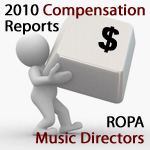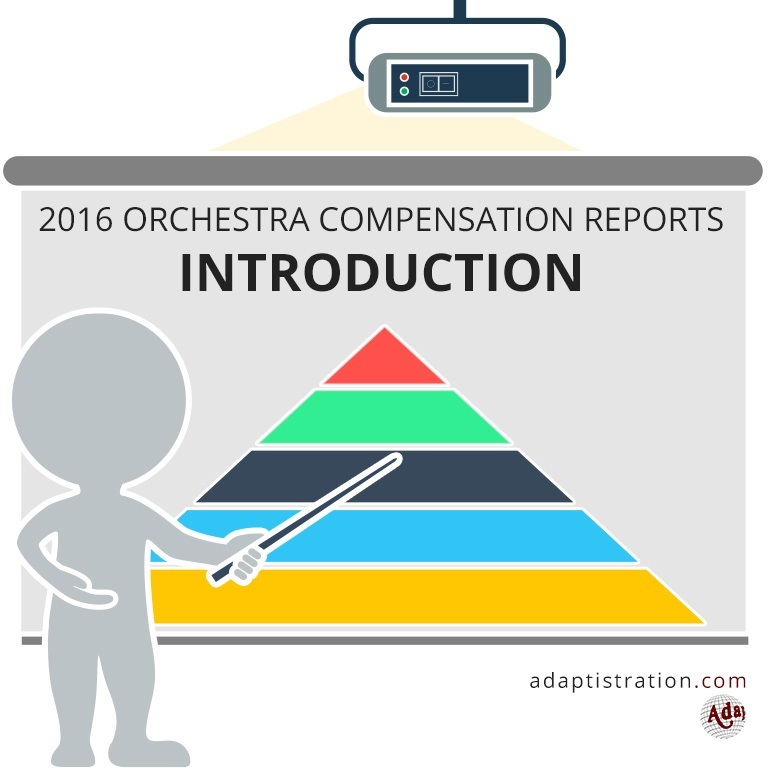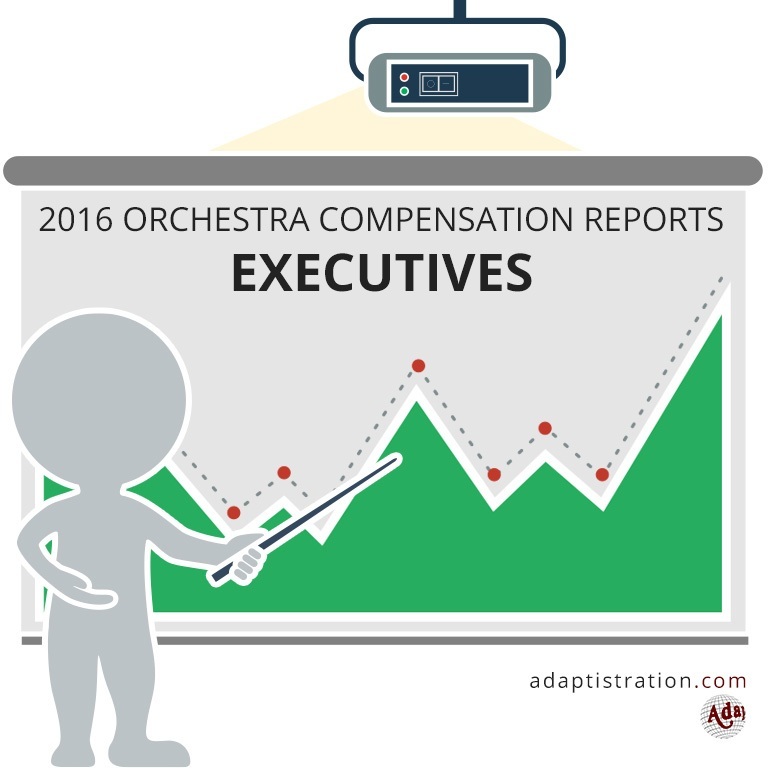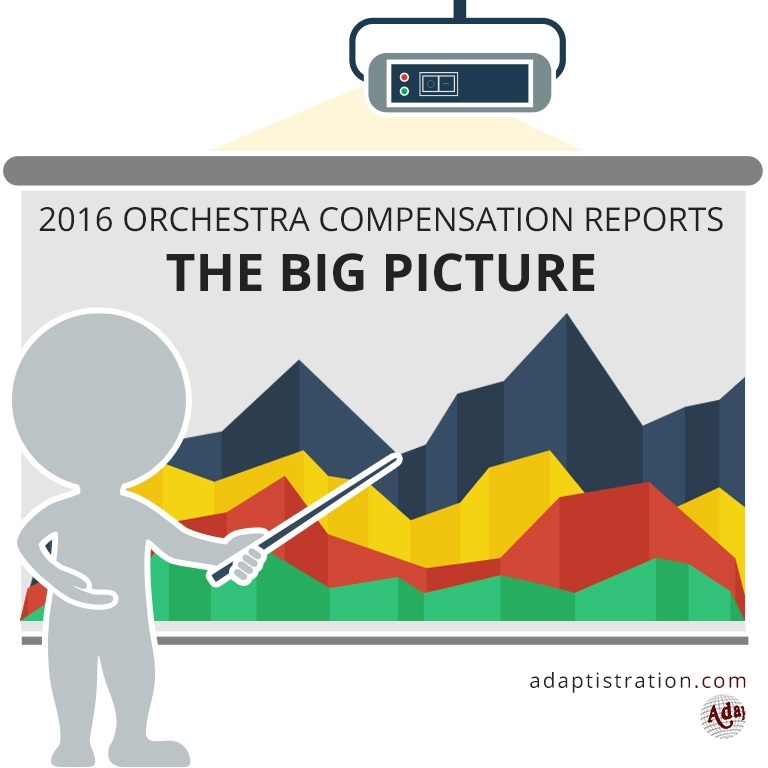The 2007/08 season was an up and down year for average ROPA music directors. On one hand, average compensation only increased by 1.02 percent, less than musician stakeholders, but the real average moved that to a level twice as high as musician stakeholders…
WHERE THE DATA COMES FROM
 In order to provide information that is as accurate as possible, data from the 2007/08 season is gathered from the following sources:
In order to provide information that is as accurate as possible, data from the 2007/08 season is gathered from the following sources:
- Executive compensation figures were obtained from their respective orchestra’s IRS Form 990 for the 2007/08 concert season.
- Total Expenditures were also obtained from each respective orchestra’s IRS Form 990 for the2007/08 concert season.
- Base Musician compensation figures were obtained from records collected by the American Federation of Musicians (AFM) for the 2007/08 concert season.
Adaptistration makes no claim to the accuracy of information from documents compiled or reported by external sources. If you have reason to believe any of the information is inaccurate or has changed since reported in any of the above sources and you can provide documentation to such effect, please feel free to submit a notice.
WHAT THE NUMBERS DON’T SHOW
It is important to remember that the numbers shown do not always convey a complete compensation picture. For example, a music director may have had a large increase in salary due to leaving a position and per terms of the employment contract, may have received a sizeable severance or deferred compensation package. As such, the cumulative compensation may artificially inflate annual earnings.
Furthermore, these figures may not reflect bonuses or other incentive payments, therefore underreporting what conductors may actually earn nor do they include combined salary figures for conductors serving as music director for more than one orchestra. Also missing from the figures are expense accounts and other perks; as such, the cumulative compensation for music directors may or may not be more than what is listed. Additionally, the documents used to gather data do not indicate how much of the season an individual received a salary. As such, excessive adjustments in the percentage change from the previous season’s compensation may be artificially adjusted.
Although the music director compensation figures include the combined amounts reported as what the IRS classifies as “compensation” and “contributions to employee benefit plans & deferred compensation,” each orchestra does not always report figures for the latter category. Additionally, some organizations list music director compensation among the five highest paid private contractors as opposed to employee compensation. In these instances, no information about benefits or deferred compensation is available. Finally, in instances where music directors also perform as a featured soloist with their ensemble, these fees are sometimes negotiated under separate contract for others, they are included in their music director contract.
As for Regional Orchestra Player Association (ROPA) musicians, unlike the vast majority of their peers in International Conference of Symphony and Opera Musicians (ICSOM) ensembles who all earn no less than the musician base salary, all ROPA ensembles use a tiered system of salary and/or per service payments. For example, although the Richmond Symphony may list a base musician salary of $29,415, more than 60 percent of the musicians earn less than that base salary figure. Those players are paid via sliding per service tier system and may earn as little as a few thousand dollars per season.
In the strictly per service ensembles, the figures listed in the Base Musician compensation column are actually the average annual income earned by section string players (or section wind players if no information for the string players was available). This figure is reported by the AFM because it best represents annual earnings for the musicians who perform the greatest number of services in any per service orchestra; string musicians. However, those compensation figures are not always guaranteed. Additionally, the Base Musician figures do not include any additional payments offered by some organizations such as voluntary outreach services, and minimum overscale payments. Finally, opera or ballet organizations are not included in these reports, only symphonic and chamber orchestra ensembles.
REAL AVERAGES
In order to obtain a clearer picture of changes in average compensation, compensation data from orchestras that did not pay a music director for an entire season or paid incoming and outgoing music directors in the same season are factored into a “real average.” Although this is not a definitive figure, it does assist in proving a more comprehensive picture of compensation. When applied to this year’s data the average change in music director compensation increased from 1.02 to 6.90 percent.
TOP 10 EARNERS AND QUICK FACTS
- The highest paid music director earned 2.43 percent less than the previous season.
- The average annual compensation for a Top 10 highest paid music director was $193,155.
- Cumulatively, the Top 10 music directors earned $1,931,553.
A PICTURE IS WORTH A THOUSAND WORDS
This chart isn’t presented with any subtext, messages between the lines, or sensational overtones. It simply is what it is: a graphic illustration of statistics.



